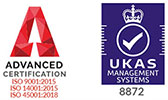When it comes to warehouse management, there are a few ways in which the managing of it can be detrimental to how it operates. There are some mistakes that are commonly made by warehouse managers which can have a negative impact on several different things, from profits to inventory volume and everything in between. So what are some of the most common warehouse management mistakes that you should be avoiding to make sure your operations go off without a hitch? Let’s take a closer look:
1. Holding excess inventory
According to the Retail Times, almost half of retailers are stuck with excess stock, Excess inventory can be the route of profit shrinkage, especially when you have spent money with no, or very little, return on investment (ROI). Only buy what you know you will sell. You might be wondering how you can know that – take a look back at your data and stats. How much of one thing do you sell a month? Order that volume in, plus a little more just in case. It’s better that you sell out of something rather than buy copious amounts of items that just will not shift. You will then see a change in the profits you’re making, for the better.
C
2. Failing to optimise warehouse space & picking paths
When it comes to making sure your warehouse runs smoothly, part of the problem can be a lack of efficiency and productivity, and that can come as a result of inadequate space management. You’ll likely find that optimising your warehouse space will allow for picking path simplicity effortlessly, as the two often go hand in hand. Some tips for maximising warehouse space are as follows:
- Use vertical space
- Adopt cross-docking
- Implement mezzanine flooring
- Consolidate warehouse locations
- Improving the shelving
- Nix the excess inventory
- Reevaluate storage mediums
- Making aisle widths smaller (add VNA forklifts to your fleet)
- Use any empty space you can find
- Reorganising stock, making popular items more easily accessible
C
3. Not using a warehouse management system (WMS)
Sticking to old-fashioned ways of measuring progress and going about your warehouse operations can cost time and money. Don’t keep relying on paper and other traditional systems, like Microsoft programmes, for instance. Instead, implement some dedicated WMSs to get the job done for you. This will be especially beneficial if the WMS you have chosen can automate jobs. Make sure your employees are doing value-added tasks rather than administrative jobs that can be done for them. This is essential for warehouse management.
C
4. Inadequate health & safety measures in place
Health and safety is absolutely paramount to the running of any business, not just in the warehousing and distribution industries. Warehousing, however, poses more threat and risk to employees than you might have otherwise thought. From falling objects to forklift accidents, there seem to be health and safety risks around every corner, but there are some things you can do to keep your employees safe at all times while they’re on the clock. Not only is this, ethically, the right thing to do, but it also prevents expensive lawsuits. Some of the health and safety measures you can put in place, alongside going on training courses, include:
- Providing employees with the right clothing, such as fluorescent jackets, hard-capped boots, hard hats, goggles, gloves, over-clothes, cold-weather items and more
- Making sure all machine operators are fully trained and aware of how to operate the equipment safely, such as taking corners slowly and carefully navigating up and down gradients, for instance
- Marking out the safe and dangerous zones, using tape, chains and other things to keep unauthorised personnel out of dangerous spaces
- Ensuring your forklifts and other pieces of machinery have working lights and alarms, so people can see and hear the machine coming
- Make sure inventory is stacked adequately, with heavier items at the bottom of the racking and lighter stock at the top, to avoid toppling
- Checking the warehouse racking is secured safely to the wall to prevent it from falling over
C
5. Neglecting goods-in & goods-out processes
Goods-in and goods-out processes are simple enough to follow, but without the right training, this can become somewhat difficult to maintain. In fact, it can have a detrimental effect on your inventory and profits. Why? Because goods-in and goods-out also include date rotation. This is especially important should you work in the food and drink or catering industries.
If your food and drink expire, then you will have to throw it all away. This can make a big dent in your profits. Make sure you’re date-rotating on a regular basis to avoid this. Also, your employees should be checking items for signs of damage, either to prevent further damage or to make room for fresh stock that can be looked after more appropriately.
This brings me to the other factor to consider which is the handling of goods. Inventory needs to be handled with care, mainly to avoid accidents and damage. With the right training, you’ll find that your inventory handling improves, and the amount you have to waste will significantly reduce as a result.
C
C
Multy Lift has over three decades of experience in the material handling industry, providing customers throughout the UK with quality warehouse machinery and unparalleled warehouse services, such as mezzanine flooring and warehouse racking. From forklifts and reach trucks to pallet trucks and order pickers, we can be counted upon for your every material handling need. If you would like further information, get in touch with a member of our friendly, knowledgeable team today – we’re always pleased to hear from you.







